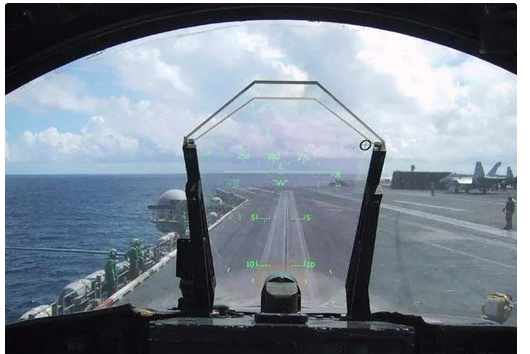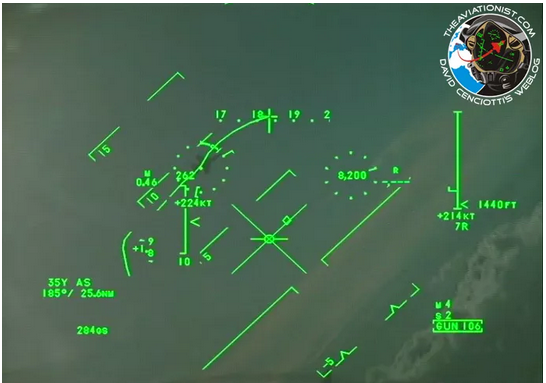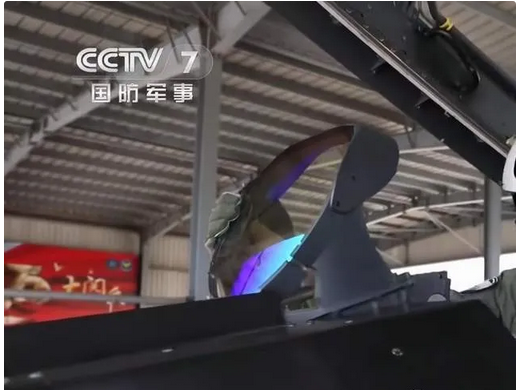Pakistan's JF-17 Dragon Block3 is equipped with a new holographic display!
On January 4th, photos of the first batch of assembled and offline JF-17 Block 3 were released in Pakistan, and it was confirmed that the first offline aircraft had undergone ground sliding tests, indicating that the progress of the entire project is very fast. In the released photos, the large new diffraction head up display (HUD) of the JF-17 Block 3 is very eye-catching.This flat display not only has a large size, but also, like the flat displays of fifth generation machines in various countries, is a third-generation single-chip diffraction flat display, demonstrating its high technical level.

Image: The diffraction flat display size of Xiaolong Block 3 is not small
Taken by PakistanisFrom the side details of this diffraction flat display, it matches the latest diffraction flat display exhibited by domestic manufacturers at the 2021 Zhuhai Airshow, and is fixed to the lens of the earlier exhibited Aurora EHUD-2There are differences in the details of the box, and the button layout of the operating interface is also different. However, the new diffraction level display, like the Aurora EHUD-2, supports the use of the Eagle Eagle II forward-looking infrared night vision system, which can directly project the infrared image of the Eagle Eagle II onto the HUD lens, making it convenient for pilots to fly at night. However, we have not yet seen the Pakistani Air Force purchase the Eagle II system, and it should be possible in the future.

Image: The HUD side of the JF-17 Block 3 matches the new model exhibited in 2021

Image: Differences in diffraction level display details between Aurora EHUD-2 (left) and the new model (right)

Image: The night vision image of Eagle Falcon II can be directly projected onto diffraction level display
Diffraction head up display, also known as wide-angle holographic head up display, is a new type of head up display commonly used in fourth, fourth and fifth generation machines that have been improved and upgraded by various countries. It uses holographic photography technology and wavefront reconstruction imaging technology to generate holograms by recording the amplitude and phase of lightImage and project it onto the human eye,The principle of the geometric head up display commonly used in fighter jets is completely different from before. Geometric flat display mainly utilizes the principles of refraction and reflection of light to project information characters onto coated glass. Compared with single piece diffraction flat display, the structure of geometric flat display is more complex, heavier, and the display effect is also very poor. The main problems are insufficient character brightness and a too small field of view, which is very eye catching when used in sunlight during the day and also unfavorable for close combat.

Image: The new diffraction plane used in the Xiaolong Block 3 has a high display effect and high character brightness

Image: Display effect of dual glass overlay geometric display used in Su-35S

Image: F-18C's dual glass overlay HUD
According to the American report, the average character brightness of the diffraction head up display is three to four times higher than that of the geometric head up display, and even five times higher than that of the old model, and the display accuracy is also higher. This makes the pilot's eyes more comfortable and able to see more clearly when obtaining flight information in aerial combat. In terms of field of view, diffraction flat display can easily achieve a pitch field of view and a horizontal field of view of 20 degrees or more, which is easier to implement than geometric flat display. For example, the Rafale fighter jet equipped by the Indian Air Force uses the Thales CTH3022 wide-angle holographic head up display, which has a horizontal field of view of 30 degrees and a pitch field of view of 20 degrees, while the domestically displayed Aurora EHUD-2 has a horizontal field of view of 30 degrees and a pitch field of view of 20 degreesThe field of view is very close to that of the Wind gust HUD, with only a slight difference in horizontal field of view. The new diffraction display on the JF-17 Block 3 will definitely not be lower than the level of the Aurora EHUD-2, and will be on the same horizontal line as the diffraction display of Rafale.

Image: Thales CTH3022 wide-angle holographic head up display of Rafale fighter jet

Image: Display effect of gust HUD

Image: The Thales CTH3022 was also sold to Russia, equipped with SU-30SM, but later due to sanctions against Russia, France cut off the supply of this flat screen display

Three piece diffraction flat display for J10C

Single chip diffraction flat display on domestic fifth generation machines
At present, China is leading the world in the development of diffraction flat displays, mainly due to our early start. In the early 1980s, we keenly tracked the development of foreign diffraction head up display, while Americans developed the world's first diffraction head up display in 1977, so our starting time can be said to follow them closely. Finally, we realized the technical breakthrough of three piece diffraction head up display in the 1990s, but it was after the 21st century that we put it into practice. It was first widely used on the J11B fighter jet, and later models were all equipped with diffraction heads up displays. However, the single-chip diffraction flat display is currently widely used in China's fifth generation aircraft and upgraded Falcon advanced trainer aircraft, while others use three piece diffraction flat display. Therefore, the Pakistan JF-17 Block 3 benefited from its relatively late birth and instead used single-chip diffraction flat display before our domestic fourth generation and fourth and fifth generation fighter jets, which is quite interesting. At the same time, it also reflects Pakistan's technical requirements for the JF-17 Block 3, which is to strive towards a level of technology that can compete with gusts as much as possible. If gusts exist, JF-17 Block 3 must also have it.
Source: Military of Strong Countries